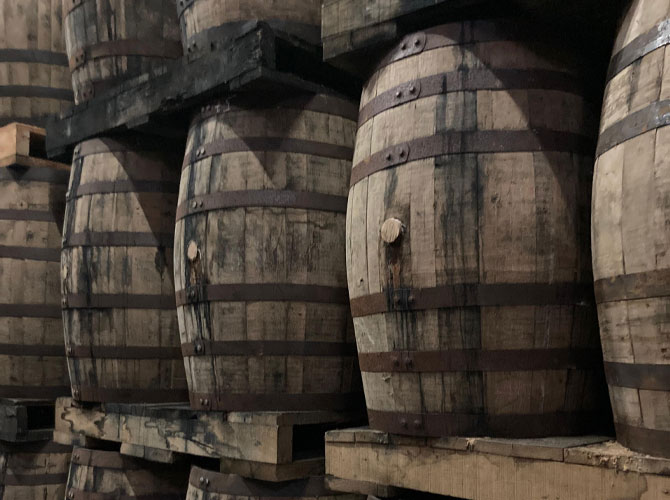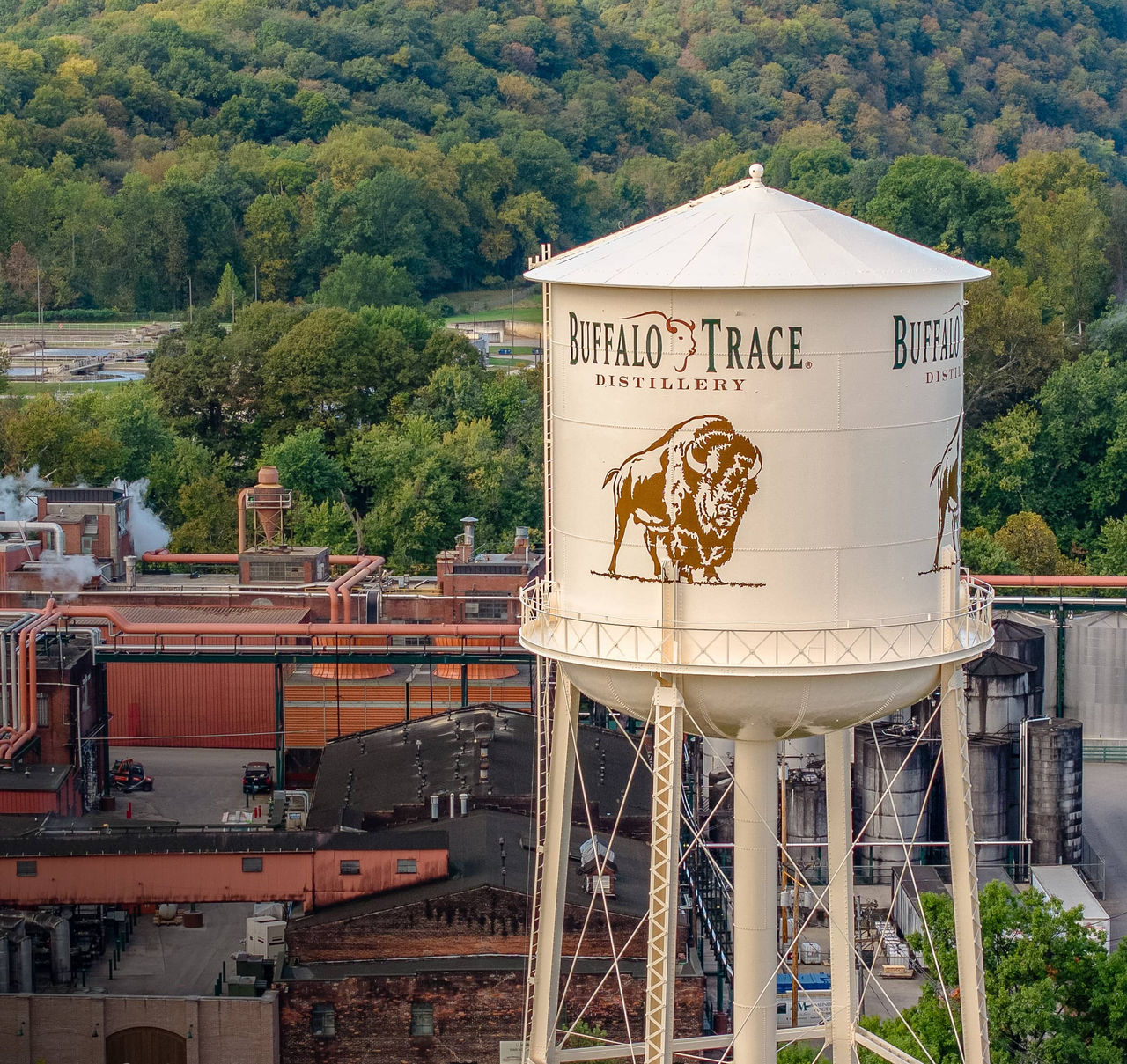Journal of a whisky enthusiast 2025 - Episode 7
Whisky lover and consultant at Comptoir Irlandais, join me at the beginning of each month for a journey into the world of spirits. Through my publications, I'll share with you my impressions, my favorites and all the knowledge I've acquired about these exceptional beverages. I'll also take you to fascinating distilleries and share with you the secrets of their expertise. A not-to-be-missed event for whisky enthusiasts and enthusiasts!
Épisode 7 : Journey to the heart of American distilleries: between legends, century-old oaks and exceptional whiskies.
Every month, I immerse myself in the fascinating world of distilleries, but this time, I'm taking you with me on a journey that's a little bit special. We'll be crossing the Atlantic, immersing ourselves in American whiskey culture and discovering 2 places that have made history, stories that have become legends and people who have shaped the entire landscape of this spirit.
But before we jump in, a word about an often overlooked truth: American oak casks. They're much more than just a container; they're the beating heart of the whisky industry worldwide. American law requires bourbon to be aged in new oak casks. Once used, these casks can no longer be used for another bourbon, but they are ideal for aging Scotch, Irish or Japanese whiskies. Their vanillin-rich white oak brings notes of vanilla, caramel and sweet spices, essential to the profile of many of the whiskies we love. It's thanks to this “second life” that American whiskey plays such an important role, providing an indispensable aging tool for the global spirits industry.
Buffalo Trace
Buffalo Trace is one of the oldest distilleries still in operation in the United States. Its history began around 1771, on a buffalo trail opened by pioneer Daniel Boone. In 1812, a distillery was set up on this strategic site in Frankfort, on the banks of the Kentucky River. It was known successively as Old Fire Copper and George T. Stagg Distillery, before being modernized at the end of the XIXᵉ century. In 1999, after a seven-year renovation, it adopted its current name under the aegis of the Sazerac group.
During Prohibition, Buffalo Trace was one of the few distilleries to survive thanks to a license allowing it to produce medicinal bourbon. This privilege enabled it to preserve its know-how, while many of its neighbors disappeared. This continuity has earned it National Historic Landmark status and worldwide recognition, confirmed by numerous awards.
The distillery has been marked by strong personalities. E.H. Taylor Jr. pioneered the modernization of bourbon, while Harlen Wheatley, master distiller since 2005, launched an ambitious $1.2 billion expansion plan, paving the way for iconic cuvées like Eagle Rare 12 Year Old. Women have also played an important role: Bettye Jo Boone Estep helped modernize production in the 1970s, and Peggy Noe Stevens, founder of the Bourbon Women Association, regularly collaborates with Sazerac.
On the technical front, Buffalo Trace remains faithful to new American oak barrels, burned inside. Its steam-heated warehouses ensure even ageing, while Warehouse V houses every millionth barrel produced and Warehouse X serves as an experimental laboratory, exploring light, humidity and climatic variations.
The setting is equally striking: red-brick buildings, 19thᵉ century warehouses and proximity to the Kentucky River make up an authentic landscape.
Its range reflects a desire to strike a balance between affordability and prestige. The Buffalo Trace Bourbon remains an affordable classic. The 90 Proof uses an old recipe created by the distillery in 1999. The classic Buffalo Trace is a benchmark for Bourbon lovers. The Sazerac; a Straight Rye that embodies the history and tradition of New Orleans in the 1800s! Not forgetting, of course, the Eagle Rare brand, with its aromatic palette of rare intensity for a Kentucky whiskey.
At Comptoir Irlandais, this combination of history, innovation and passion resonates naturally with us. We showcase single barrels and limited editions, bridging the gap between America's bourbon heritage and the curiosity of European whiskey lovers.
Jack Daniel’s
After Jack, his nephew Lem Motlow took over the reins. He guided the distillery through Prohibition and the Second World War, managing to revive the business in 1938. Under his leadership, the company became a major player in Tennessee whiskey, a style distinguished from bourbon by its charcoal filtration, which gives it a rounder, smokier profile.
The setting adds to the charm: Lynchburg is a peaceful little town listed on the National Register of Historic Places. Ironically, the county is “dry”: whiskey is produced here, but local sales are prohibited. But that doesn't stop 300,000 visitors a year from discovering this cultural and tourist mecca.
Jack Daniel is said to have died of a foot injury after an angry blow to his safe. As for the mysterious “Old No. 7”, no one knows for sure what it refers to: perhaps his tax registration number, perhaps just a personal wink. In front of the spring, a humorous statue of Jack “On the Rocks” maintains the bon vivant spirit of the house.
At Comptoir Irlandais, Jack Daniel's deserves its place. It represents both an accessible gateway to the world of American whiskey and a gateway to more specialized expressions. Behind every bottle lies a terroir, a tradition that makes Jack Daniel's an eternal, unifying and universal classic.
Old or new, legendary or avant-garde, all these American distilleries have one thing in common: they rely on a unique resource, American white oak (Quercus alba). It's oak that gives bourbon its personality, as the law requires the exclusive use of new/heavily topped casks.
But its role extends far beyond the borders of the United States: after their first life in Kentucky or Vermont, these barrels cross the oceans to age Scotch in Scotland, rums in the Caribbean, cognac in France, tequila in Mexico, and even Japanese or Indian whiskies. Each barrel is a recycled piece of history, carrying a little bit of America in every sip from around the world
Why this universality? Because American oak is rich in lactones (notes of coconut and vanilla) and soft tannins, which bring roundness and warmth. Bousinage also releases aromas of caramel and cocoa. The result is a powerful sensory identity that goes equally well with spicy Vermont rye, Martinique cane or Scottish barley.
Behind every bottle of bourbon or rye, there's an ecological and economic dimension: a sustainable forestry industry, specialized cooperages and an international wood trade that shapes the world of spirits.
In short, American oak is much more than a container: it's the common denominator of the whisky planet (and its cousins), the invisible link between Loretto, Dublin, Cognac, Tokyo or Martinique.
Written by Philomène B.




